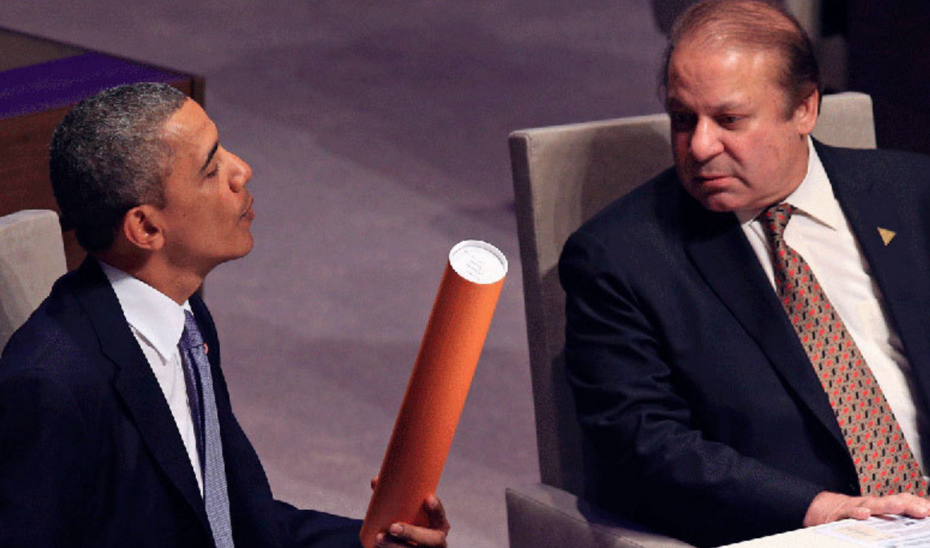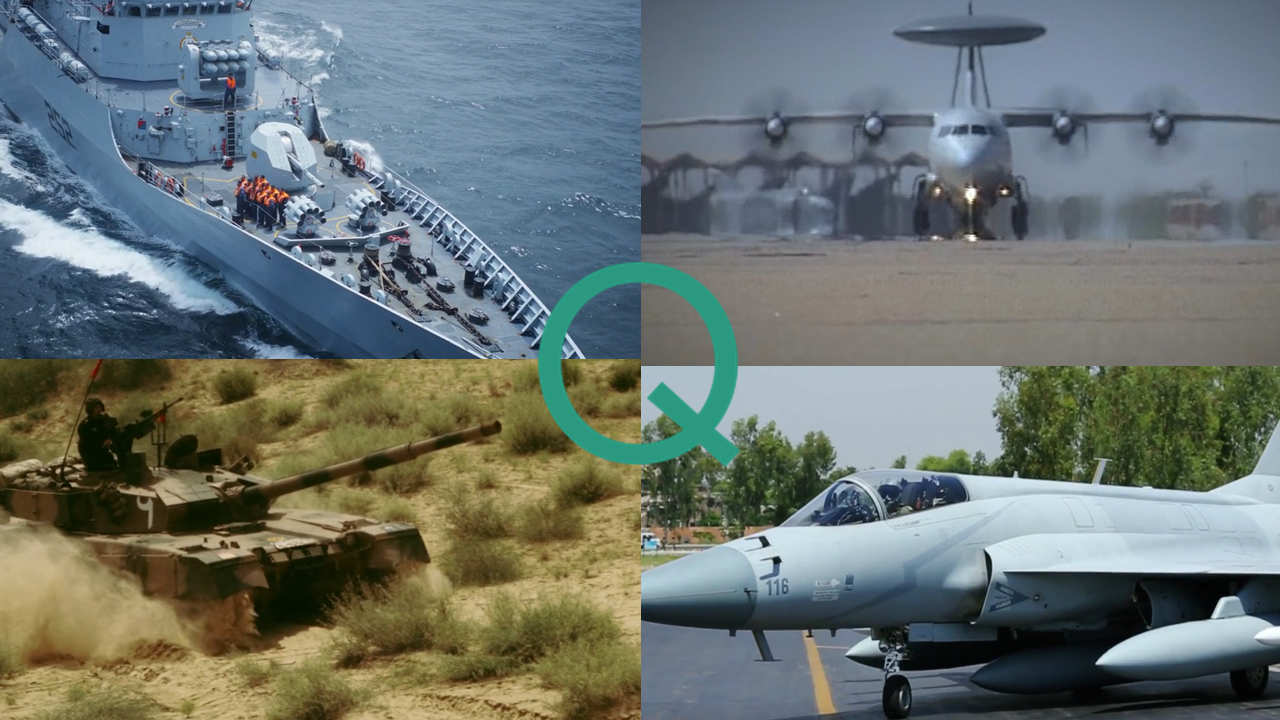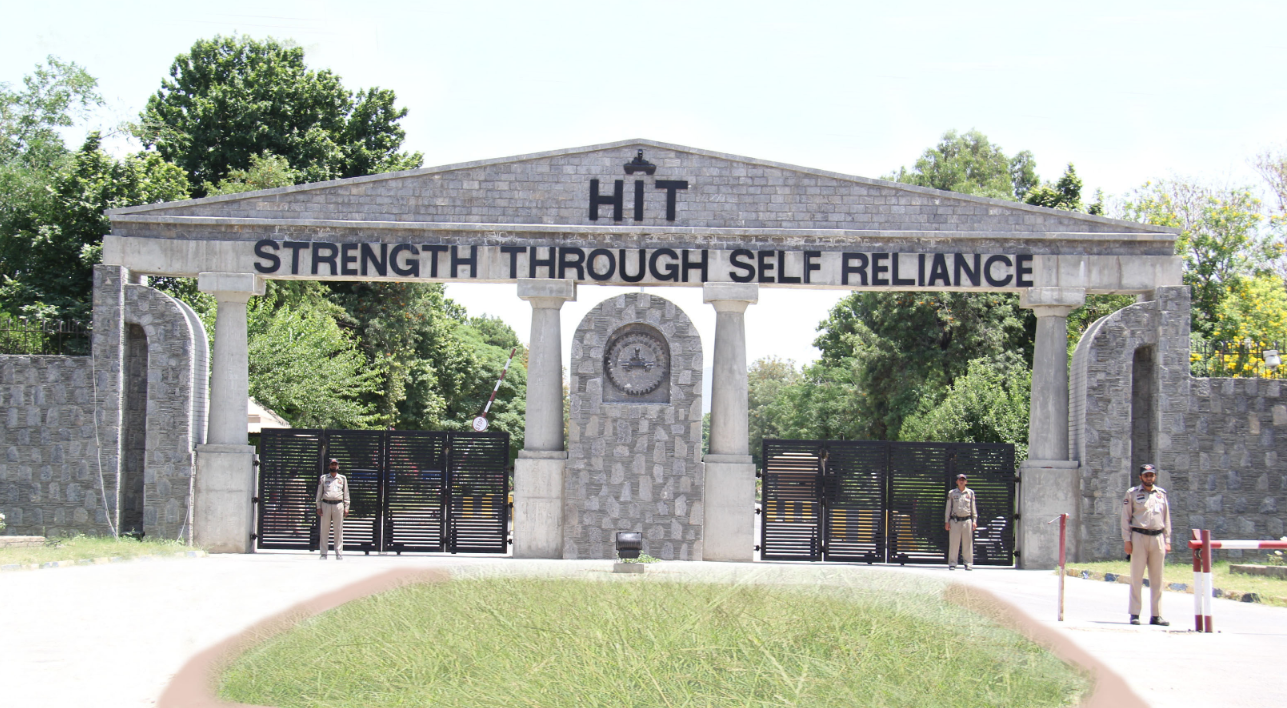24Views 37Comments

This Week in Review: Can Pakistan find an alternative to America?
Every weekend, Quwa will close the week’s news with a review and analysis with the aim to tie together several topics into broader themes. It is an opportunity to reflect upon and discuss issues in a way where key trends are identified and individual news topics are connected into a “bigger picture.”
Can Pakistan find an alternative to America?
Washington’s decision to withhold $300 million in Coalition Support Funds (CSF) to Pakistan (on account of its apparent unwillingness to neutralize the so-called ‘Haqqani Network’) will require Pakistan to review its approach for securing advanced armaments. Traditionally, access to U.S. aid and armaments has served as a means for Pakistan to procure technologically advanced weaponry, especially during the Cold War.
The F-16 is perhaps the most identifiable example of this fact. The F-16 served as the Pakistan Air Force (PAF)’s qualitative spear tip since its induction in the 1980s. However, the PAF is not the only service arm to be dependent on American arms in this manner. The mainstay of the Pakistan Navy’s maritime patrol aircraft (MPA) fleet is comprised of Lockheed Martin P-3C Orion aircraft. The Army’s dedicated attack helicopter fleet is centered on the AH-1F/S Cobra, and it secured a purchase of 15 Bell AH-1Z Vipers.
While workhorse units are generally of Chinese origin, the Pakistani military has still sought Western armaments as a means to maintain and build its qualitative capabilities. For example, it was the F-16s – via the Block-52+ and Mid-Life Update (MLU) – that introduced modern precision-strike, advanced tactical data-link connectivity and beyond visual range (BVR) air-to-air capabilities to the PAF fighter fleet.
In light of Pakistan’s systemic economic troubles, U.S. assistance has been a central component in helping the Pakistani armed forces acquire modern weaponry, i.e. modern American weaponry. With the stop on CSF and the refusal to provide Foreign Military Financing (FMF) support for a proposed sale of eight F-16C/D Block-52+, Pakistan should consider this avenue shut.
Granted, one might argue that if Pakistan had possessed a strong economy, it would be able to buy American arms. However, this belies the reality of how Washington generally pursues its long-term security interests, especially in the Middle East and Asia. If there was a desire to see a country such as Pakistan strengthened militarily, then a weak economy would not stop it from becoming stronger. As with many countries, such as Egypt and even Pakistan of past decades, military aid would have been used. At the minimum, one should readily conclude that the U.S. has no active interest in seeing a militarily strong Pakistan (otherwise, it would have propped one up, as it had in earlier decades).
Moreover, it is Pakistan’s structural economic problems that (only in part) predispose it to look favourably towards the U.S., and pursue the U.S. as an avenue to help it meet its defence needs in relation to India. In the absence of that aid, and left to its own inherent economic capabilities and foreign relations ‘muscle’, Pakistan’s ability to offset its dependence on U.S. arms – especially in the qualitative or high-tech area – is severely limited. While Western Europe is not as committed to binding arms transfers to its overseas security interests as the U.S., the likes of France and Britain will still require payment for their $250 million a unit Dassault Rafales and Eurofighter Typhoons, respectively. Russia, which is in a precarious economic situation, simply requires hard cash, and in Pakistan’s case, it also needs assurances that sales lost to India could be secured through Pakistan. Realistically, it is apparent that Pakistan cannot cater to either source.
This leaves Pakistan with a limited set of options. First, there is China, which views Pakistan as strategically valuable on two main fronts: long-term economic progress and offsetting India. As long as the U.S. seeks to contain China, and India gradually creeps into Washington’s sphere of interests, then Beijing will have an interest in positioning Pakistan as a counterweight to India (so as to relieve pressure).
As demonstrated with a recent purchase for eight air-independent propulsion (AIP) powered submarines, Beijing is willing to offer Pakistan flexible support mechanisms – e.g. financing options – as a means to fulfill its defence needs. In addition, Pakistan can benefit from the vast scale generated by the People’s Liberation Army (PLA)’s need for advanced arms. In many cases, such as in the area of conventional submarines, development funding is assured and extensively distributed (across a large number of PLA units), thereby making ventures with the Chinese comparatively less costly and less risky. It is likely that a large number of Pakistan’s future defence requirements will draw from the Chinese industry.
The second option would be intermediary sources of Western technology, such as Turkey. Utilizing its networks with NATO and the Western defence industry, Turkey has developed a series of NATO-compliant solutions, such as the Aselsan ASELPOD advanced targeting pod (which is poised to be used from the JF-17 Thunder). Of course, Turkey’s ability to provide financing support (like China or the U.S.) is severely limited, if not non-existent at this time. Pakistan would need to pay in hard cash. Furthermore, not every component of Turkey’s offerings will be readily available for export. For example, while the Turkish Aerospace Industries (TAI) T-129 seems to have drawn interest from the Pakistan Army, TAI will still need to acquire third-party approval to export the T-129’s turboshaft engine, which is of Anglo-American origin.
In either scenario, Pakistan’s ability to procure effective qualitative solutions – especially in emerging areas – is limited. If not out of vendor sensitivities, then Pakistan’s own inherent (read: financial) limitations. The Pakistani military will need to reposition the domestic industry as not only its principle resource for cost savings, but technology parity as well. This is not to suggest that the domestic base will be able to cater for every aspect of the armed forces’ qualitative needs, but Pakistan cannot afford to maintain its existing position, i.e. the fact that it can only import the entirety – or even the majority – of its high-tech defence needs from the U.S. Kamra Aviation City and the PAF’s intentions behind its next-generation fighter program may be concrete steps towards this route.


